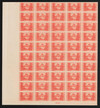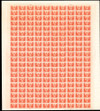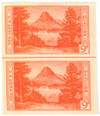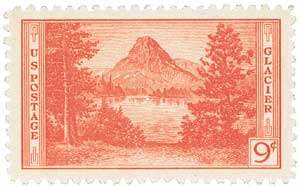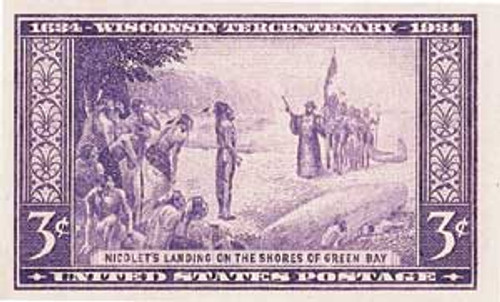
# 764 - 1935 9c National Parks: Glacier National Park, imperf, no gum
U.S. #764
1935 9¢ Glacier
Special Printing – Issued Imperforate without Gum
Issue Date: March 15, 1935
First City: Washington, DC
Quantity Issued: 1,625,224
Establishment Of Glacier National Park
The earliest-known inhabitants of present-day Glacier National Park arrived about 10,000 years ago and were members of the Salish, Flathead, Shoshone, and Cheyenne tribes. By the early 1700s, the Blackfeet were the predominant tribe in the area, particularly in the prairies east of the mountains. Kalispell and Kootenai lived and hunted in the western valleys.
Many tribes in the area believed the mountains were home to great spirits. Individuals would embark on long vision quests to the peaks to discover what the spirits had to share. Chief Mountain was long considered to be a home of powerful medicine that the tribes would seek out in times of need.
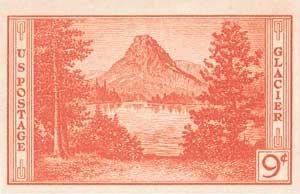
In the late 1700s, French, English, and some Spanish trappers began finding their way into the area. British trapper David Thompson of the Hudson Bay Company is credited as the first white man to see the area’s natural wonders, arriving in the 1780s. Upon seeing the Rocky Mountains, he wrote, “their immense masses of snow appeared above the clouds and formed an impassible barrier even to the Eagle.”
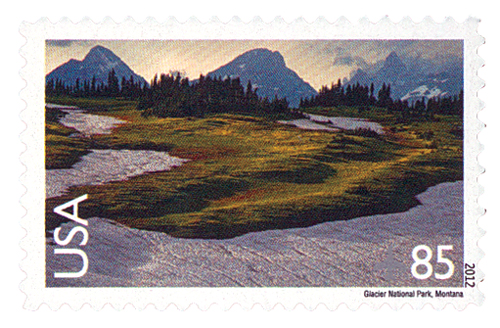
When the Lewis and Clark Expedition explored the American West in 1806, they came within 50 miles of the current park. They were searching for Marias Pass, but the overcast sky blocked it from their view. Had it been a clearer day, they might have had an easier journey traveling through the mountains. By the early 1800s, more European and American trappers were traveling through the area in search of fashionable beaver pelts. They were met by the aggressive Blackfeet that sought to protect their land and bison, their main source of food.
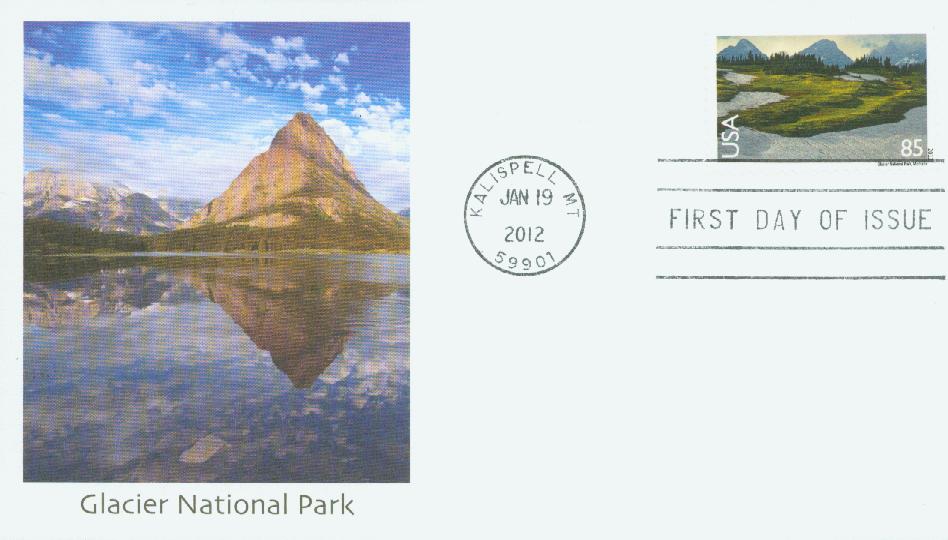
Soon, more explorers arrived and began asking the natives about an easier passageway through the mountains – Marias Pass. The Blackfeet knew of it, but would not share its location. In the 1850s, Washington Territorial Governor Isaac Stevens negotiated treaties with the tribes in the hopes of discovering the pass. The 1855 Lame Bull Treaty established the Blackfeet Reservation, giving the tribe their own land, and American explorers the freedom to find the pass.
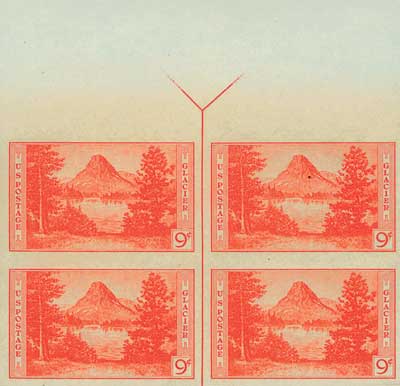
However, by the 1880s, smallpox had reduced the Blackfeet’s numbers and the last of the bison were killed. James Willard Schultz, an American who had become part of the tribe, wrote to George Bird Grinnell, editor of Forest and Stream magazine, for help. Grinnell visited the area many times. He wrote articles to promote government assistance to the Blackfeet, and eventually to encourage the establishment of a National Park.
Grinnell worked with officials of the Great Northern Railway to persuade Congress to protect the area, serving both the interests of conservation and tourism. In 1889, one of the railway’s explorers, John F. Stevens, discovered the Marias Pass. Within two years, the Great Northern Railway crossed the Continental Divide. To promote business, the railway advertised the natural splendors of the area. Meanwhile, George Bird Grinnell continued to promote the conservation and protection of the area through his magazine. In 1897, their combined efforts saw the area designated as a forest preserve. In this capacity mining was still allowed, but proved unsuccessful and did not last long.
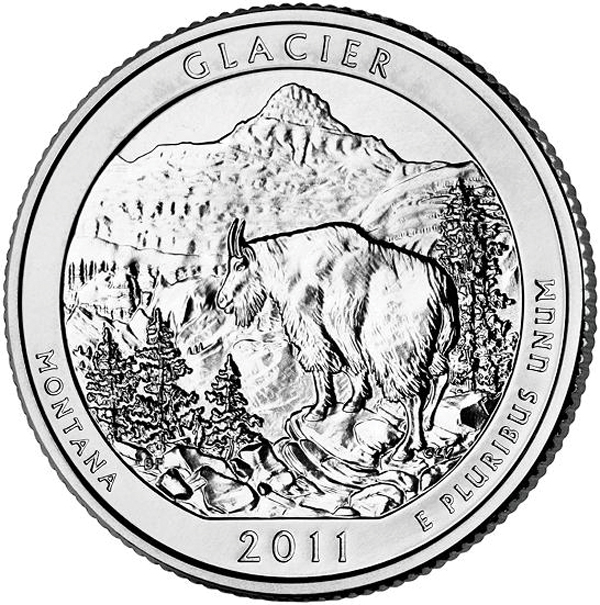
Grinnell and other conservationists recognized the importance of preserving the park like Yellowstone and other parks before it. He continued to push Congress and publish articles supporting this idea. In one of these, he called the area the “Crown of Continent,” a name that has been associated with the park and surrounding ecosystem ever since. After several decades of lobbying, Congress approved the creation of the park. President William Howard Taft signed the bill into law on May 11, 1910, establishing Glacier as America’s 10th National Park. For his efforts, Grinnell is often celebrated as the “Father of Glacier National Park.”
When the park was first established, then-president of the Great Northern Railway, Louis W. Hill, built hotels and chalets throughout the park. This increased tourism and reminded visitors of the luxurious Swiss Alps, earning the park the nickname, “America’s Switzerland.”
Click here for photos, history, and more about the park from its official National Park Service website.
What are Farley’s Follies?
Farley’s Follies is one of stamp collecting’s most interesting stories. And since most of the stamps are readily available and inexpensive, it’s easy enough to put a specialized collection together. Let’s step back in time and discover one of the Postal Service’s biggest scandals…
James A. Farley (1888-1976) got his start in politics in 1911 as town clerk of Grassy Point, New York. He moved his way through the political system, forming the Upstate New York Democratic Organization and bringing many upstate voters to the Democratic party. In 1924, he met young Franklin Roosevelt at the Democratic National Convention. Four years later, FDR asked Farley to run his campaign for New York governor. Farley helped FDR win the elections for governor in 1928 and 1930. A driving force in the US political system, Farley helped FDR win the 1932 and 1936 presidential elections. Roosevelt made Farley his Postmaster General. Farley was pivotal in turning around the US Post Office Department. He helped the department finally turn a profit and revolutionized airmail service.
The infamous “Farley’s Follies” controversy began in 1933 when Farley removed several stamp sheets from the printing presses before they were gummed or perforated. He autographed these sheets (which were not available to the public) and gave them to colleagues and family, creating precious philatelic rarities. Stamp collectors were outraged when they discovered what had happened. Finally, the Post Office came up with a solution – the reissue in sheet form of all the stamps issued since March 4, 1933, in ungummed condition, all but the first two imperforate and in sufficient numbers to satisfy public demand. Although Farley and FDR had a falling out over Roosevelt’s plan to run for a third term, Farley remained a strong force in the political and business worlds. He went on to serve as Chairman of the Board of the Coca-Cola Export Corporation and served as a trusted advisor to several Popes, dignitaries, and Presidents until his death in 1976.
Farley’s Follies are Scarce and Valuable Collectibles
The British stamp firm Gibbons reportedly declared the reprint was “nauseous prostitution,” and at first refused to list the issues in their famous stamp catalog! But even today, over 80 years after they were issued, collectors still love Farley’s Follies.
“Farley’s Follies” were issued in large sheets that are way too big to fit in stamp albums. So smart collectors snapped up blocks and pairs in a variety of formats instead. They not only fit, but these key formats are an easy way to understand the stamp printing process.
Mystic purchased full sheets of these mint stamps and made them available in scarce formats like vertical, horizontal and gutter pairs plus arrow blocks, line pairs and cross gutter blocks. All are hard to find – some occur only once in every stamp sheet. It’s a neat way to own a scandalous slice of US postal history.
U.S. #764
1935 9¢ Glacier
Special Printing – Issued Imperforate without Gum
Issue Date: March 15, 1935
First City: Washington, DC
Quantity Issued: 1,625,224
Establishment Of Glacier National Park
The earliest-known inhabitants of present-day Glacier National Park arrived about 10,000 years ago and were members of the Salish, Flathead, Shoshone, and Cheyenne tribes. By the early 1700s, the Blackfeet were the predominant tribe in the area, particularly in the prairies east of the mountains. Kalispell and Kootenai lived and hunted in the western valleys.
Many tribes in the area believed the mountains were home to great spirits. Individuals would embark on long vision quests to the peaks to discover what the spirits had to share. Chief Mountain was long considered to be a home of powerful medicine that the tribes would seek out in times of need.

In the late 1700s, French, English, and some Spanish trappers began finding their way into the area. British trapper David Thompson of the Hudson Bay Company is credited as the first white man to see the area’s natural wonders, arriving in the 1780s. Upon seeing the Rocky Mountains, he wrote, “their immense masses of snow appeared above the clouds and formed an impassible barrier even to the Eagle.”

When the Lewis and Clark Expedition explored the American West in 1806, they came within 50 miles of the current park. They were searching for Marias Pass, but the overcast sky blocked it from their view. Had it been a clearer day, they might have had an easier journey traveling through the mountains. By the early 1800s, more European and American trappers were traveling through the area in search of fashionable beaver pelts. They were met by the aggressive Blackfeet that sought to protect their land and bison, their main source of food.

Soon, more explorers arrived and began asking the natives about an easier passageway through the mountains – Marias Pass. The Blackfeet knew of it, but would not share its location. In the 1850s, Washington Territorial Governor Isaac Stevens negotiated treaties with the tribes in the hopes of discovering the pass. The 1855 Lame Bull Treaty established the Blackfeet Reservation, giving the tribe their own land, and American explorers the freedom to find the pass.

However, by the 1880s, smallpox had reduced the Blackfeet’s numbers and the last of the bison were killed. James Willard Schultz, an American who had become part of the tribe, wrote to George Bird Grinnell, editor of Forest and Stream magazine, for help. Grinnell visited the area many times. He wrote articles to promote government assistance to the Blackfeet, and eventually to encourage the establishment of a National Park.
Grinnell worked with officials of the Great Northern Railway to persuade Congress to protect the area, serving both the interests of conservation and tourism. In 1889, one of the railway’s explorers, John F. Stevens, discovered the Marias Pass. Within two years, the Great Northern Railway crossed the Continental Divide. To promote business, the railway advertised the natural splendors of the area. Meanwhile, George Bird Grinnell continued to promote the conservation and protection of the area through his magazine. In 1897, their combined efforts saw the area designated as a forest preserve. In this capacity mining was still allowed, but proved unsuccessful and did not last long.

Grinnell and other conservationists recognized the importance of preserving the park like Yellowstone and other parks before it. He continued to push Congress and publish articles supporting this idea. In one of these, he called the area the “Crown of Continent,” a name that has been associated with the park and surrounding ecosystem ever since. After several decades of lobbying, Congress approved the creation of the park. President William Howard Taft signed the bill into law on May 11, 1910, establishing Glacier as America’s 10th National Park. For his efforts, Grinnell is often celebrated as the “Father of Glacier National Park.”
When the park was first established, then-president of the Great Northern Railway, Louis W. Hill, built hotels and chalets throughout the park. This increased tourism and reminded visitors of the luxurious Swiss Alps, earning the park the nickname, “America’s Switzerland.”
Click here for photos, history, and more about the park from its official National Park Service website.
What are Farley’s Follies?
Farley’s Follies is one of stamp collecting’s most interesting stories. And since most of the stamps are readily available and inexpensive, it’s easy enough to put a specialized collection together. Let’s step back in time and discover one of the Postal Service’s biggest scandals…
James A. Farley (1888-1976) got his start in politics in 1911 as town clerk of Grassy Point, New York. He moved his way through the political system, forming the Upstate New York Democratic Organization and bringing many upstate voters to the Democratic party. In 1924, he met young Franklin Roosevelt at the Democratic National Convention. Four years later, FDR asked Farley to run his campaign for New York governor. Farley helped FDR win the elections for governor in 1928 and 1930. A driving force in the US political system, Farley helped FDR win the 1932 and 1936 presidential elections. Roosevelt made Farley his Postmaster General. Farley was pivotal in turning around the US Post Office Department. He helped the department finally turn a profit and revolutionized airmail service.
The infamous “Farley’s Follies” controversy began in 1933 when Farley removed several stamp sheets from the printing presses before they were gummed or perforated. He autographed these sheets (which were not available to the public) and gave them to colleagues and family, creating precious philatelic rarities. Stamp collectors were outraged when they discovered what had happened. Finally, the Post Office came up with a solution – the reissue in sheet form of all the stamps issued since March 4, 1933, in ungummed condition, all but the first two imperforate and in sufficient numbers to satisfy public demand. Although Farley and FDR had a falling out over Roosevelt’s plan to run for a third term, Farley remained a strong force in the political and business worlds. He went on to serve as Chairman of the Board of the Coca-Cola Export Corporation and served as a trusted advisor to several Popes, dignitaries, and Presidents until his death in 1976.
Farley’s Follies are Scarce and Valuable Collectibles
The British stamp firm Gibbons reportedly declared the reprint was “nauseous prostitution,” and at first refused to list the issues in their famous stamp catalog! But even today, over 80 years after they were issued, collectors still love Farley’s Follies.
“Farley’s Follies” were issued in large sheets that are way too big to fit in stamp albums. So smart collectors snapped up blocks and pairs in a variety of formats instead. They not only fit, but these key formats are an easy way to understand the stamp printing process.
Mystic purchased full sheets of these mint stamps and made them available in scarce formats like vertical, horizontal and gutter pairs plus arrow blocks, line pairs and cross gutter blocks. All are hard to find – some occur only once in every stamp sheet. It’s a neat way to own a scandalous slice of US postal history.






